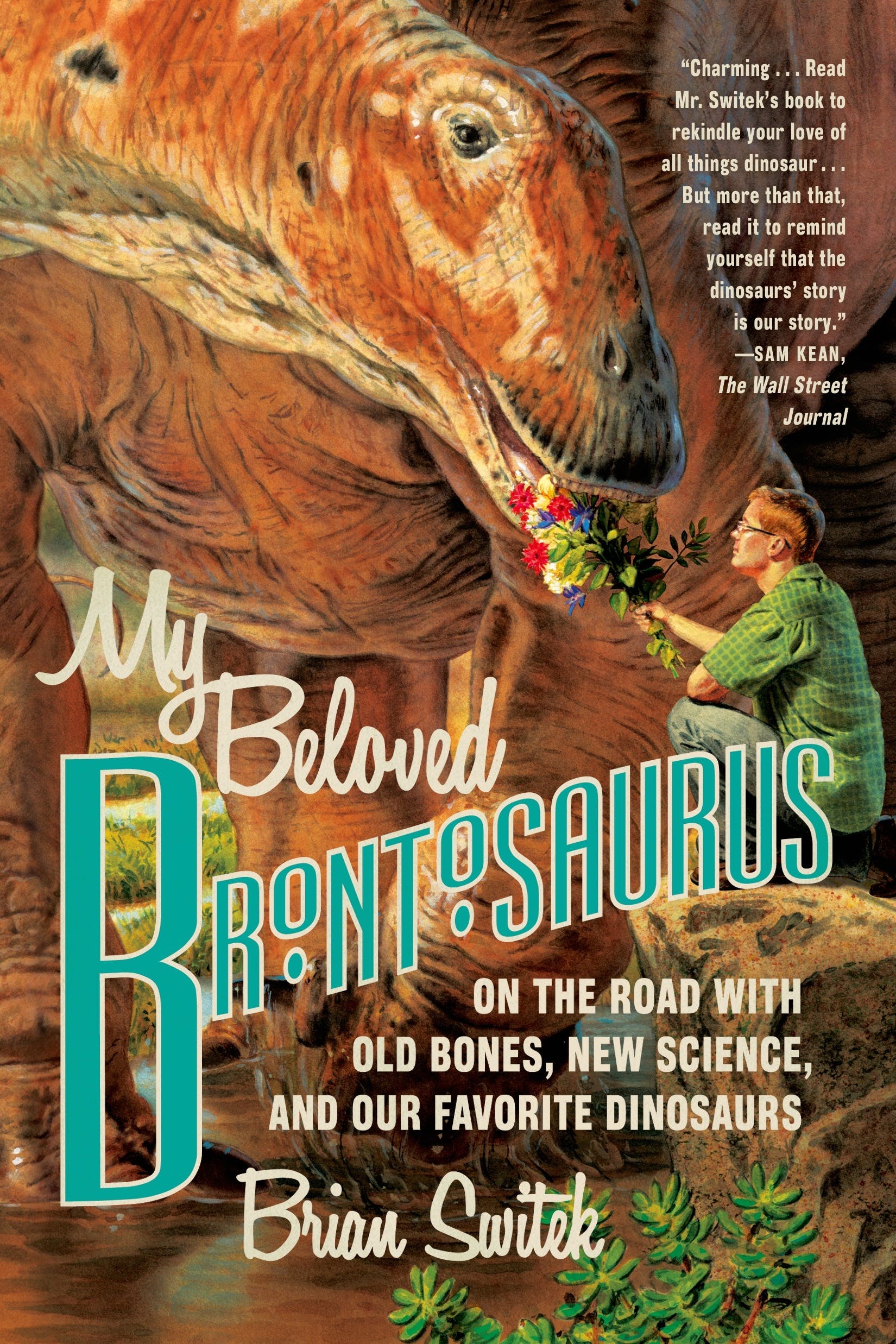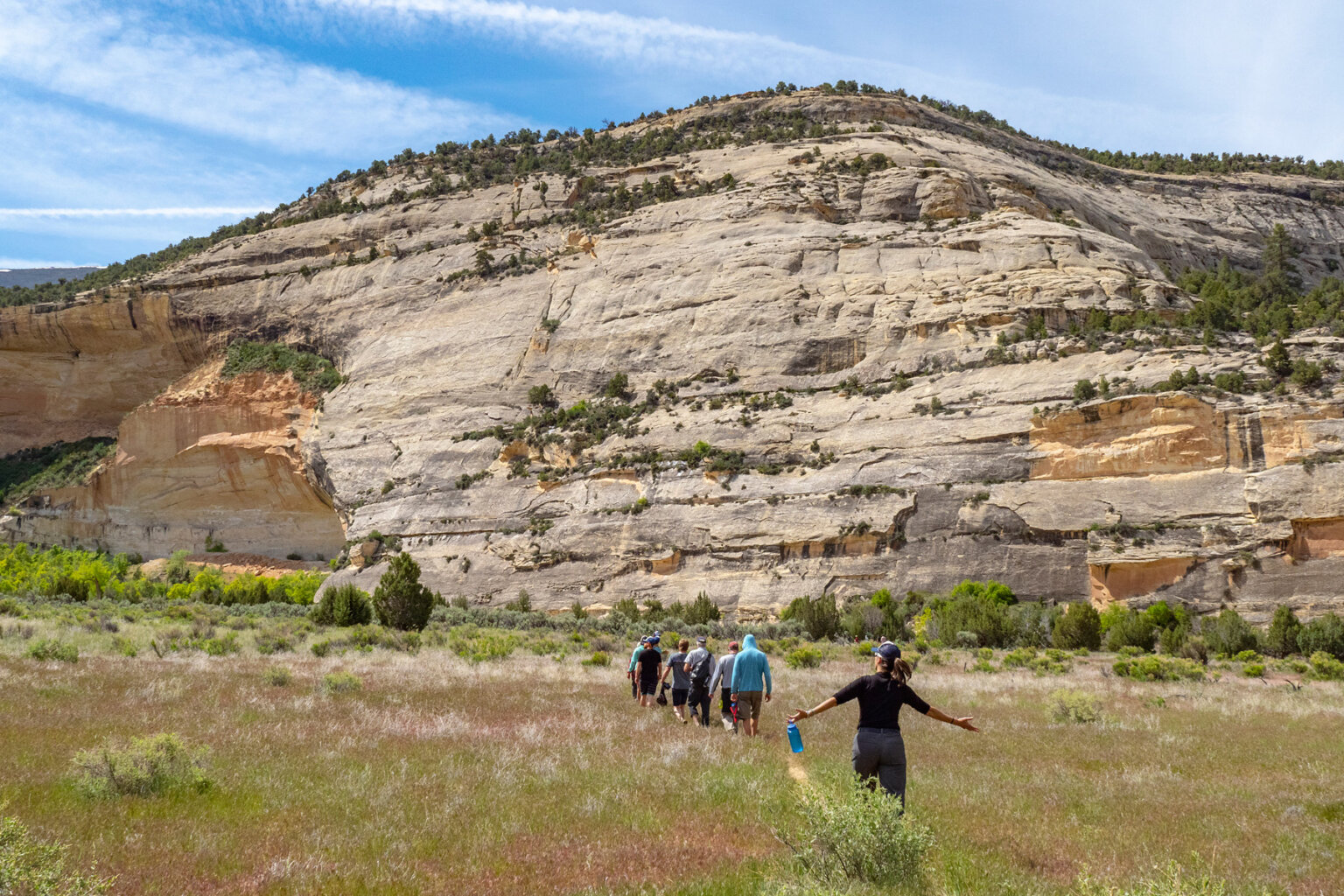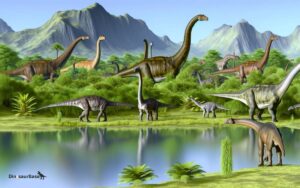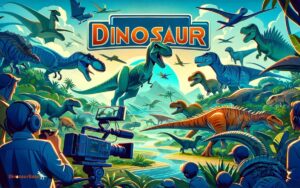Where is Dinosaur National Monument: An Explorer’s Tale
Dinosaur National Monument straddles the border between Colorado and Utah. It is nestled near the towns of Jensen and Dinosaur.
This prehistoric treasure trove occupies over 200,000 acres of land, offering a potent mix of natural beauty and paleontological wonders. Visitors to the monument can gaze upon a vast array of dinosaur fossils embedded in the rock at the Quarry Exhibit Hall.
The protected area encompasses river canyons, captivating desert landscapes, and a wealth of geological formations, making it not only a haven for history and science enthusiasts but also for outdoor adventurers. Trails for hiking, petroglyphs, and breathtaking overlooks provide memory-making experiences. While Dinosaur National Monument is renowned for its array of Jurassic-era fossils, the vast, rugged terrain invites exploration and discovery, promising something for everyone.

The Geographical Mystery Of Dinosaur Fossils
The past cloaks its secrets in layers of earth and stone, none more intriguing than those found at Dinosaur National Monument. Here, a geographical puzzle waits to be solved. This landscape once teemed with prehistoric life, but today it asks a simple yet profound question: How did so many dinosaur fossils end up here? As we explore, we uncover the unique placement and the waterways that may hold the answer to this mystery.
Straddling States: The Monument’s Location
Set in the heart of North America’s rocky spine, Dinosaur National Monument is a marvel. The monument stretches over two states: Colorado and Utah. Its vast terrain covers nearly 210,000 acres, offering a window into an ancient world. Strategically atop the Morrison Formation, rich in Jurassic-era fossils, the monument reveals stories of ancient inhabitants through its exposed bones and relics embedded in the cliffs.
The Majesty Of The Green And Yampa Rivers
The Green and Yampa rivers carve a liquid path through the monument, creating a haven for a diverse ecosystem. The confluence of these rivers is not just a spectacle of natural beauty but also a key piece in the puzzle of the area’s fossil abundance. The force of flowing water may have gathered and buried the remains of dinosaurs, preserving them for millennia. Today, these rivers continue to shape the land, hinting at the ancient processes that led to the area’s rich paleontological significance.

Credit: nationalparktraveling.com
Journey To The Past: Unearthing Dinosaur National Monument
Step back in time to an era where dinosaurs roamed the Earth. Dinosaur National Monument offers a window into our planet’s distant past. A visit here is more than just a trip; it’s an exciting exploration of history, geology, and paleontology.
From Desert To Dig Site: The Landscape
Vast stretches of rocky terrain give way to rugged canyons and rolling hills. This dynamic landscape, straddling the border between Utah and Colorado, encompasses the dig site of Dinosaur National Monument.
- Elevations vary from 4,700 feet to over 9,000 feet.
- The area features river valleys and dry plateaus.
- Climate swings from scorching summers to snowy winters.
Jurassic Giants: Discoveries That Marvel
Over 800 paleontological sites have made Dinosaur National Monument a treasure trove. This place is renowned for its multitude of dinosaur fossils. Visitors marvel at the sight of these ancient remains, embedded in the rocks.
| Dinosaur | Period | Discovery Highlights |
|---|---|---|
| Allosaurus | Jurassic | One of the most common yet impressive carnivores found here. |
| Diplodocus | Jurassic | Known for their long necks and tails, these giants dominated the landscape. |
| Stegosaurus | Jurassic | Distinctive for their spiked tails and plated backs. |
Tales Beneath The Surface: The Monument’s Discovery
Dinosaur National Monument holds secrets from millions of years ago. Beneath its rocky layers, tales of ancient beasts await those eager to learn. It all began with its discovery. Join us as we delve into the monuments rich past, unearthing its origins and the efforts to protect its prehistoric treasures.
Early Explorers And Bone Hunters
In the early 20th century, adventurous paleontologists scoured the rugged terrain of what is now Northeastern Utah and Northwestern Colorado. They sought remnants of the Earth’s former inhabitants. Their perseverance paid off in 1909 when paleontologist Earl Douglass, working for the Carnegie Museum, found plant and dinosaur fossils. His discovery was not just a few bones, but a dense graveyard of dinosaur skeletons.
- 1909: Earl Douglass uncovers a wealth of dinosaur bones.
- Dinosaur remains lay embedded in the mountain’s flank, on the edge of what is now called the Morrison Formation.
- This place became a treasure trove for science, shedding light on creatures that roamed the Earth millions of years ago.
Protecting Prehistory: The Monument’s Establishment
The significance of Douglass’s find was clear, propelling actions to safeguard this paleontological goldmine. On October 4, 1915, President Woodrow Wilson declared the site as Dinosaur National Monument. This bold move protected 80 acres of land as a national monument, ensuring the preservation of these historic findings.
| Date | Event |
|---|---|
| 1909 | Earl Douglass discovers dinosaur fossils. |
| 1915 | President Wilson establishes Dinosaur National Monument. |
| Present | The Monument spans over 210,000 acres, inviting exploration and study. |
The targeted conservation efforts led to expanded boundaries over time. The monument now spans a whopping 210,000 acres. It stands as a testament to the enduring legacy of the ancient world and the continuous efforts to understand it. The monument not only offers a glimpse into the past but serves as an inspiring example for preservation and education.

Credit: www.facebook.com
Navigating The Terrain: A Visitor’s Guide To The Park
Ready for a prehistoric adventure in Dinosaur National Monument? Spanning across the border of northeastern Utah and northwestern Colorado, this park boasts not just fossils, but breathtaking scenery and countless activities for explorers of all ages. Let’s dive into navigating the terrain so you can maximize your adventure in this ancient wonderland.
Essential Trails And Scenic Routes
Discover the beauty of Dinosaur National Monument on foot. The park offers an array of trails that promise awe-inspiring views and encounters with nature’s marvels. Here’s a snapshot of what you should not miss:
- Fossil Discovery Trail: An easy hike that leads to a famous Quarry Exhibit Hall, where you can see dinosaur bones embedded in the rock.
- Sound of Silence Trail: A 3-mile moderate trek showcasing colorful formations, vast silence, and a chance to spot wildlife.
- Green River Campground: A picturesque base camp that serves as a starting point for various trails, complete with facilities for a comfortable stay.
Museum Highlights And Interactive Displays
Step into the Quarry Exhibit Hall for a fascinating journey through time. Here are some highlights to look out for:
| Exhibit | Description |
|---|---|
| Wall of Bones | A dramatic display featuring over 1,500 dinosaur bones. |
| Touch and Learn | Interactive stations with fossil replicas and educational games. |
| Ranger Programs | Expert-led sessions on paleontology and the park’s natural history. |
Beyond the exhibits, participate in ranger-led walks that delve into the monument’s storied past. Your visits to the museum pave the way for a deeper connection with the land once roamed by giants.
Conservation And Controversy: The Monument’s Modern Challenges
Dinosaur National Monument faces today’s challenges with care. These troubles impact the monument’s future. We dig deeper into two main issues below.
Balancing Tourism And Preservation
Dinosaur National Monument welcomes visitors from around the globe. Yet, high visitor numbers can harm delicate fossils. Managers must ensure protection while supplying a memorable experience for tourists.
- Limiting foot traffic in sensitive areas
- Creating educational programs for visitors
- Developing sustainable visitor facilities
Educational signage and guided tours are key. They teach respect for these treasures.
Fossil Poaching And Legal Battles
Illegal collection of fossils threatens Dinosaur National Monument. The lure of these ancient remains results in ongoing poaching.
Law enforcement and park rangers work tirelessly. They protect against theft and damage. Here’s what they do:
- Patrol the vast grounds regularly
- Employ surveillance technology
- Engage in legal battles to convict poachers
Fighting these battles is critical. It ensures the monument’s history remains intact for future generations.

Credit: www.oars.com
Beyond The Bones: Cultural And Recreational Activities
At Dinosaur National Monument, the journey begins with prehistoric wonders, but the adventure doesn’t stop there. Explore the rich tapestry of cultural history and dive into energetic outdoor activities that this unique destination offers.
Native American Heritage Sites
Step into the ancient past at Dinosaur National Monument’s Native American heritage sites. Visitors can discover rock art and cultural artifacts that span over a thousand years of human history.
- View petroglyphs and pictographs at the Canyon Pintado Historic District
- Experience the spirituality of the Swelter Shelter and reflect on history
River Rafting And Camping Adventures
The monument’s rivers are perfect for thrilling rafting trips and peaceful camping nights. Immerse yourself in nature and create memories that last a lifetime.
| Activity | Details |
|---|---|
| River Rafting | Ride the rapids of the Green and Yampa Rivers. |
| Camping | Set up camp under the stars at one of the riverside campsites. |
Conclusion
Embarking on a journey to Dinosaur National Monument offers a glimpse into Earth’s prehistoric era. Nestled on the border of Utah and Colorado, this site opens up a world of adventure and discovery. Remember, it’s more than just fossils; it’s a testament to natural history.
So pack your curiosity and set your sights on a trip to this ancient wonderland—a visit that promises to be as educational as it is thrilling.






